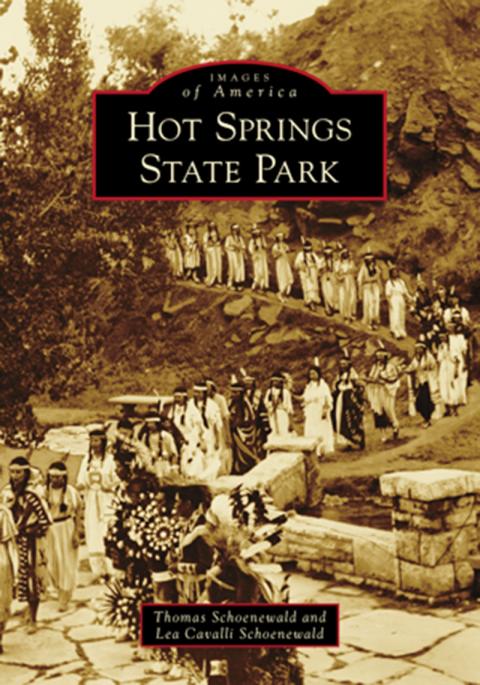Hot Springs Then and Now
Hot Springs State Park, by Thomas Schoenewald and Lea Cavalli Schoenewald. Arcadia Publishing, Charleston, S.C., 2021, 127 pages. $21.99 paperback.

Two major threads run through this history of Hot Springs State Park, which is also the story of Thermopolis, Wyo. One is the desire of medical professionals and people whose ailments were cured or ameliorated by the waters to spread the news. The other is the sharp contrast between Native and White people’s ways: The former appreciated and revered the gift of the hot mineral springs, while the latter—though also appreciating the springs—often sought to capitalize on this natural resource.
Long before White men discovered the area that became Hot Springs State Park, the Indians knew of the benefits of these waters. One photo in the book shows a private bathtub built for Washakie, chief of the Eastern Shoshones, out of the travertine created by the springs. Travertine is a limestone deposited around mineral springs, especially hot springs. Legends surrounded the existence of the hot springs, including Crow Chief's Plenty Coup's tale of a man learning of the springs' healing properties in a dream.
By 1900, the hot springs were well known around the world. Due to the Euro-American urge to profit from nature, much of the park's history includes bath houses, plunges, hotels, restaurants, homes for the aged, a suspension footbridge, rodeos and even a zoo. In the 1960s, a travel trailer with the modern equivalent of a billboard on its back represented one of many efforts to lure visitors from a wide area.
One White man, Charles Wallace from Meeteetse, installed a water wheel to generate electricity for Thermpolis. But it didn't last, in part because of mineral buildup on the works. This problem also plagued early buildings when steam and minerals weakened mortar in the walls. At least one structure was so compromised that experts predicted that no heavy equipment would be needed to demolish it.
In 1925, Maria Montabe wrote the Symbolic Indian Pageant: Gift of the Waters, performed in October of that year. The pageant was revived in 1950 and is now performed annually in the park during Pageant Days.
Whether visitors drank the water or steeped themselves in the springs, they sought cures for polio, kidney diseases, diabetes, epilepsy, rheumatism and other ailments. Many found relief, and apparently few were bitten by the rattlesnakes that sought the shade of bath houses. Today, a network of bike paths and hiking trails enhance visitors' experiences of one of Wyoming's most historic places.
Like other Arcadia books, this is available from the publisher, at museums, gift shops, bookstores, grocery stores and other locations around the state.
